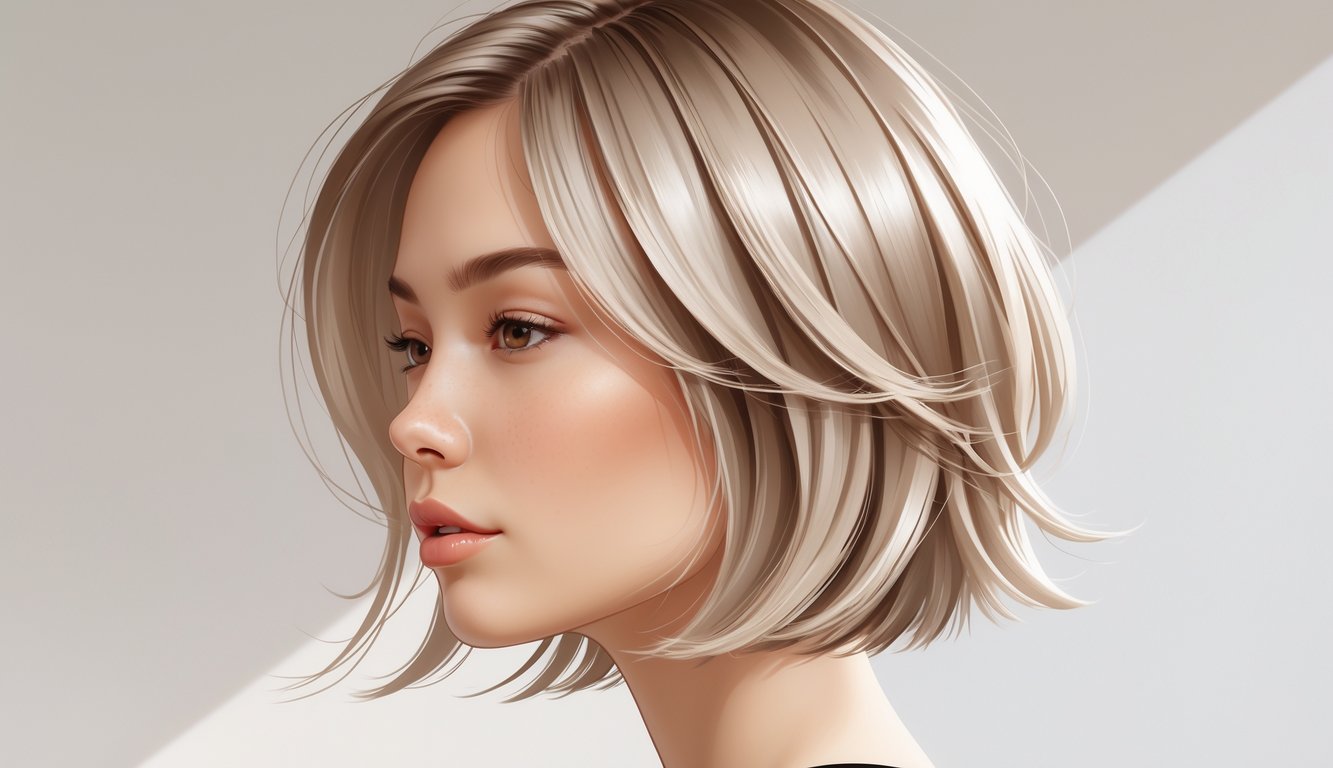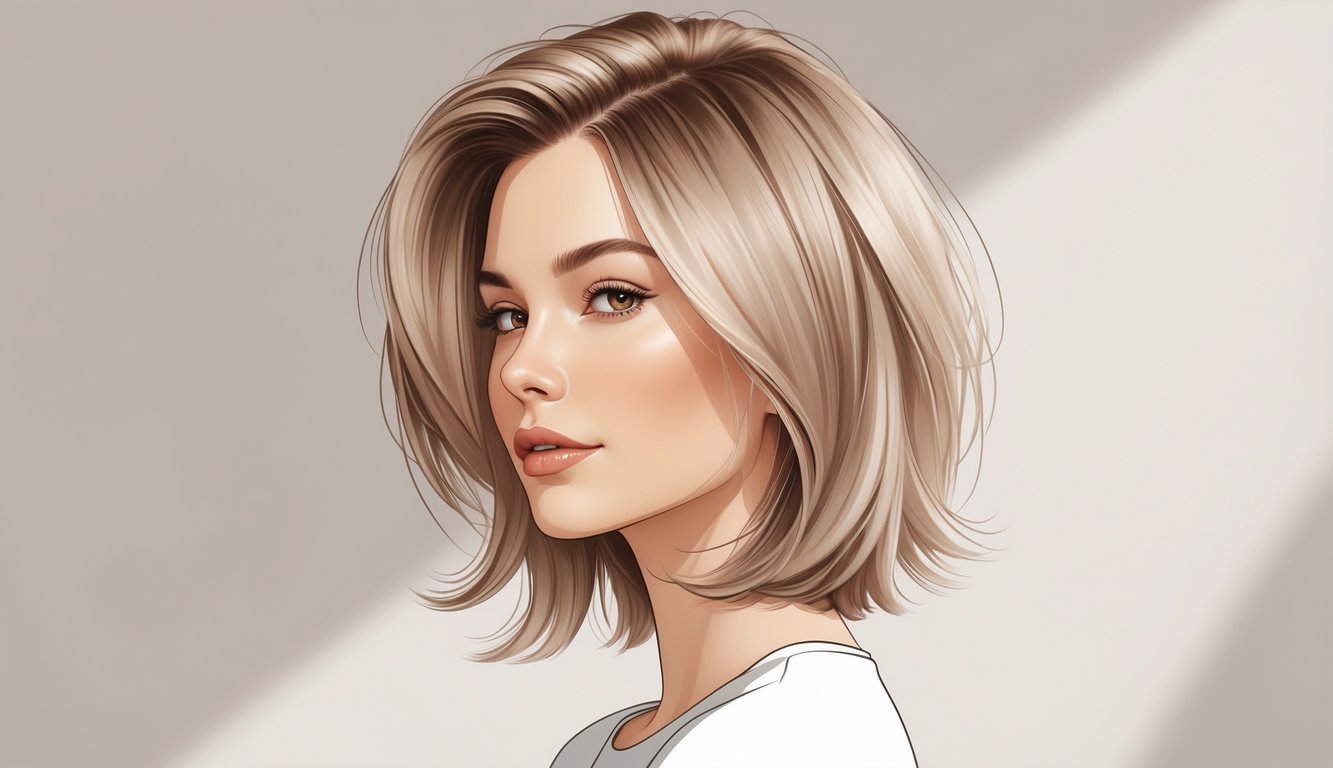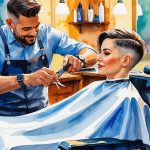
Why is everyone suddenly whispering about invisible layers? Not even kidding—every other day someone asks if they should “try fading layers,” like it’s this underground club for people who hate obvious haircuts. And yet, nobody’s out here begging for those chunky, blocky layers from, what, 2007? Stylists—plus that random friend who “almost went to beauty school”—won’t shut up about subtle, fading layers low-key taking over every haircut request. Byrdie’s quoting Sarah Potempa about ghost layers making hair “look more voluminous” without that tragic choppy thing—so, uh, why does every stylist act like they’re the first to discover scissors?
Spotting these so-called invisible layers is like finding a healthy snack at a truck stop—sometimes you see a hint, sometimes you’re just lying to yourself. I swear, half my clients ask for them but can’t explain what they are; they just want to skip marathon blow-dry sessions. The weirdest part? These “barely there” layers somehow add swing and volume without looking like you did anything. Apparently that’s the whole point. If only my shampoo budget would shrink as fast as my patience.
And the metaphors—oh my god, Christmas trees? Stylists love those. No one’s pining for 2008 Rachel hair, right? Please tell me I’m not the only one who remembers that. Invisible layers, internal layers, ghost layers—pick your buzzword. It’s all about tricking people into thinking you spent ages at the salon when really, you just sat there scrolling TikTok. Hidden volume, soft movement, new “silent flex,” whatever.
What Are Fading Layers?
So, are they fading layers, invisible layers, ghost layers, or is there a secret handshake I missed? My apartment last week: three people, too much caffeine, nobody agreed. This isn’t your old, chunky 2000s layering. We’re talking about sneaky internal layers, buried under the top, so your hair moves but doesn’t scream “I got layers!” Sarah Potempa just says it’s “subtle layers to the hair without necessarily looking like obvious layers.” Why would you want obvious layers? I don’t get it.
What keeps bugging me: no matter what you call them, the technique is all about slicing little sections deeper in the hair, not on top. Supposed to give more dimension and volume, but the shape stays the same—like hair sorcery, or maybe just scissor trickery. Whenever I try to explain “dimension,” I think of those old 3D glasses, but unless your hair is neon blue and red, it’s not that deep.
Here’s a table, because I’m a visual learner and honestly, it’s easier than listening to another stylist rant:
| Layer Type | Visibility | Effect on Hair | Nickname/Technique |
|---|---|---|---|
| Fading/Invisible | Not visible | Subtle movement, lightness | Ghost/internal, under layers |
| Traditional | Obvious | Stacked, bold, kinda loud layers | Surface/exterior layering |
Sometimes people say “hidden layers,” but let’s be real, it’s just stylist code for “I’m working underneath, don’t panic.” Also, apparently scissors with micro-serrated edges make softer lines, so you don’t leave looking like you lost a fight with a hedge trimmer. (Ask me how I know.)
People want volume, but not that choppy, step-y look—hence, fading/invisible layering is suddenly the hot ticket, especially with anyone who wants hair that grows out without a meltdown. It’s movement without exposure, like compression shorts under jeans. Nobody sees, but it works. Would I even notice if my bathroom mirror was foggier? Honestly, who knows.
Why Subtle Haircuts Are Trending

My DMs are full of “before” hair pics—everyone’s terrified they’ll lose too much length. Subtle haircuts are literally everywhere, salons are packed, stylists are debating textured ends like it’s the Olympics. Who started this “invisible maintenance” obsession? Not a clue. Not TikTok, not one celebrity, just… everyone, all at once.
The Shift from Traditional Layers
Nobody’s nostalgic for those 90s blowouts, right? Or maybe they are, I can’t keep up. Traditional layers? Too loud. Jagged lines, constant upkeep, and honestly, they look tired after a week. Ghost layers do their thing underneath—hidden angles, feathery bits only stylists notice, which I guess is why they’re “ghosts.” You barely lose length, but with a good stylist (Jennifer Korab calls it “subtle layered texture in the hair without losing length,” and she’s not wrong), your head feels lighter. Thin hair? Magically fuller. Thick hair? Moves instead of sitting like a helmet. Maintenance? Minimal. Traditional layers? Nightmare. My opinion: people want hair that looks alive without the drama. Not rocket science.
Social Media and Celebrity Influence
Scroll Instagram and you’ll see it: every celebrity stylist is suddenly obsessed with #livedinlayers and “invisible layers.” There’s money in teaching people how to look like they didn’t get a haircut. Bella Hadid, Zoe Kravitz, Zendaya—don’t tell me those bobs are natural. It’s all internal layering, not old-school layers.
And before you blame TikTok, just know: big salons say “ghost layer” requests spiked 50% in the past year (Byrdie’s got the numbers), and most viral tutorials never even use the name. You’re supposed to think it’s genetics or some $80 hair mask. Stylists on YouTube act like they’ve always done it, but that’s a lie—nobody cared until red carpet stylists started name-dropping it. Even DIYers are swapping tips in the comments: sea salt sprays, bond repairers, whatever. Sometimes it’s just for fun.
Demand for Low-Maintenance Styles
Here’s the real story: nobody wants to book a haircut every three weeks. Influencers, parents, students—everyone just wants hair that grows out without turning into a disaster. My clients literally say “I want what grows out pretty.” It’s the only trend that actually makes sense.
Subtle, blended layers mean you’re not fighting with your hair every morning. It grows out, keeps a blunt edge, and—pro tip—lets you skip panic-texting your stylist every month. Even salon owners with actual waitlists (not just TikTokers) say lived-in looks keep clients coming back, since they’re not mad at their hair two weeks later. You wake up, your hair’s fine, and nobody knows it took zero effort.
How Subtle Layers Create Volume and Movement
Last week, I tried styling my hair and had this moment—choppy layers are basically a time machine to Nickelodeon reruns. Stylists keep pushing subtle layers: “You’ll get movement, fullness, all the volume, no triangle.” Fine, whatever. Here’s what actually happens: tiny, hidden sections, no drama, and suddenly your hair has body and shape. Is it magic? No, but it’s close.
Boosting Body and Fullness
People think you need thick, obvious layers for big hair. Nope. Subtle cuts under the top layer (sometimes called ghost layers) let the heavy top hair chill while the underneath lifts everything up. You pull your hair and, wow, it’s not just flat anymore.
I watched a stylist section hair diagonally, snip like a surgeon, and bam—my boring, straight hair had bounce near the crown, no shelf marks. Wind hits, you get lift, but no weird steps. Chase Kusero calls ghost layers a “secret weapon” for movement without losing length or shape. My friend says it’s all in my head, but my selfies disagree.
Enhancing Natural Texture
Trying to fake texture with curling irons? Exhausting. Subtle layers, cut underneath, let my stubborn waves and cowlicks finally show up. No heavy chunks weighing them down. It’s not about adding fake shape, it’s about letting your hair do its thing, finally.
Stylists—especially the ones obsessed with “texturizing shears”—swear invisible layers give you movement and little bends you can’t get from blunt cuts. Sarah Potempa explains subtle layering gives volume and soft movement without harsh lines. Flat hair looks like it moves, and you don’t get those blocky chunks in photos.
Creating Soft Dimension
Colorists love talking about “dimension,” but nothing ruins a good dye job like obvious layers. Subtle techniques—sharp angles under the top layer—help light hit your hair differently, so you don’t need chunky highlights or weird roots. Braids, ponytails, whatever—it all blends.
I’ll say it: subtle layering tricks your eyes into seeing shape and softness, not flat slabs. If your hair’s thick or medium, these cuts add understated shape so your ends don’t just hang there. When light hits, you get movement, depth, and that “expensive” finish, and honestly, nobody can tell what changed except maybe you (if you’re lucky).



